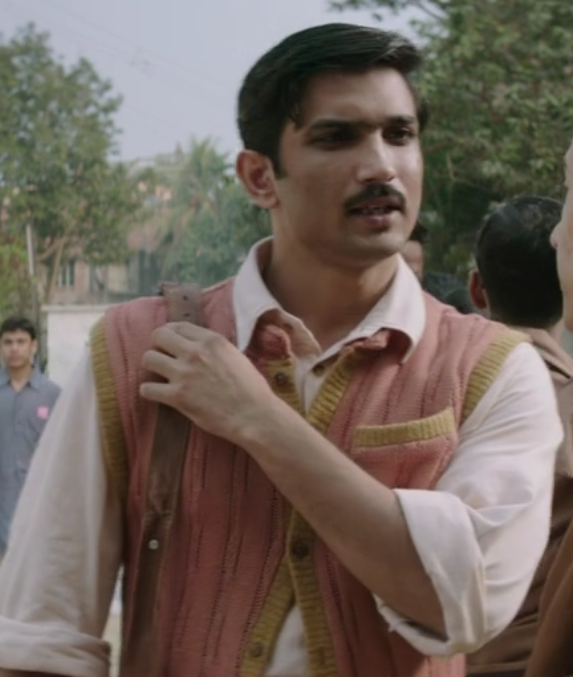I must confess I was a little lukewarm towards DBB when it released but meant to do a review of its vintage vibe all the same. A second viewing awhile ago made me appreciate the film, its attention to detail and the performances (poignant to see Sushant Singh Rajput and pity it didn’t get a sequel).
Indian knits – streetwear i.e. – are a humble and modest article of clothing. The colours are varied of course but they – along with the requisite muffler and shawl – are less about style and more about comfort. And even now, when machine made acrylics are around, they still exude a bit of the handmade, daggy vibe. Somehow it goes with chilly nights, steamy chai, mini bonfires to keep warm and the like.
And so the winter viewing meant I was drawn most to the ordinary knits of a movie that has a good amount of period detail to give the viewer a feeling of the decade in question (1940s) in Calcutta. For much of its running time, its male characters are seen in attire suggestive of a mild winter. Apart from the requisite Bengal=Shawl, characters wear vests often . Almost all of these look hand knit and range from the shabby to more refined versions indicating the social status of the wearer. And so onto the eponymous character.
If my viewing and screencapping is correct:), Byomkesh wears the peach and mustard vest below throughout the film. This is his first case and he is a lad from the provinces so presumably he sticks to the basics. Almost always it is combined with a pista green lightweight jacket and a dhoti. This was probably the last decade where attire combining several elements that were indigenous with English influences (note for e.g. Byonkesh’s shoes and socks with his dhoti) were routinely worn. Its probably also the only vest that has a nifty -albeit unused – pocket.
On to knits (basically vests) worn by other male characters in the film. Each vest has its own detailing (e.g. the front buttons in the first green vest) and almost all characters, right down to the servant Puntiram, wear one. Byomkesh’s love rival, Atanu Sen (Tirtha Mullick), appears to have the most upmarket one – a powder blue vest for the office man. In the pics are also the characters Kanai Dao (Meiyang Chang) and Ajit (Anand Twari).
Only one of the women characters wears a knit. The ensemble worn by Byomkesh’s former sweetheart Leela (Moumita Chakraborty) features a knit vest accesorised with a sari. The blouse is a little Victorian for the time since the styles were a little simpler in the 40s. But the ensemble is quite charming and the vest echoes sweater blouses of the time. In fact they remained popular I think, since my grandmother had a few back in the 1980s. Note also the front braided hair. Additions of this sort to a simple plait or updo were quite common in the 40s. And of course the brooch – the last decade to have a love affair with the accessory,
Though this post is all about the knits, briefly on the saris:
Satyavati (Divya Menon) for some reason did not need winterwear – perhaps a woman who never feels the cold?! Expectedly her wardrobe is full of local handlooms accesorised with simple blouses – again no extravagant styles but simple cuts with an occasional puff sleeve or a bit of detailing. One detail I liked was that the bindi is quite small or absent.
Anguri Devi (Swastika Mukherjee) is an actress so bling and glamour is on display. Spectacular as this fringe sari is, the syling is reminiscent of contemporary Bollywood and Kuch Kuch Hota Hai. Not very surprising since Manish Malhotra designed for this character in the film. They had a lot to draw on, but apart from a film sequence that is being shot, the styling seems a mishamash of old Hollywood and new Bollywood.
Last but not the leasr: Costume Credits!


